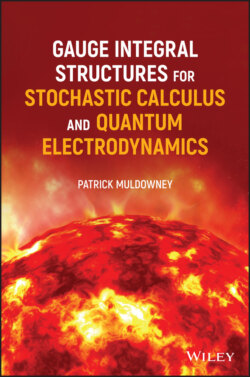Читать книгу Gauge Integral Structures for Stochastic Calculus and Quantum Electrodynamics - Patrick Muldowney - Страница 22
Example 4
Оглавление
A sample of 100 individuals is selected, their individual weights are measured, and the results are summarized in Table 2.2.Estimate the mean weight and standard deviation of the weights in the sample.
Table 2.2 Relative frequency table of distribution of weights.
| Weights (kg) | Proportion of sample |
|---|---|
| 0 – 20 | 0.2 |
| 20 – 40 | 0.3 |
| 40 – 60 | 0.2 |
| 60 – 80 | 0.2 |
| 80 – 100 | 0.1 |
Table 2.3 Calculation of mean and standard deviation.
| x | |||||
|---|---|---|---|---|---|
| 0 – 20 | 0.2 | 10 | 100 | 2 | 20 |
| 20 – 40 | 0.3 | 30 | 900 | 9 | 270 |
| 40 – 60 | 0.2 | 50 | 2500 | 10 | 500 |
| 60 – 80 | 0.2 | 70 | 4900 | 14 | 980 |
| 80 – 100 | 0.1 | 90 | 8100 | 9 | 810 |
Sometimes calculation of the mean and standard deviation is done by setting out the workings as in Table 2.3. The observed weights of the sample members are grouped or classified in intervals , and the proportion of weights in each interval is denoted by . A representative weight is chosen from each interval . The function is since, in this case, these values are needed in order to estimate the variance. Completing the calculation, the estimate of the arithmetic mean weight in the sample is
while the variance of the weights is approximately
The latter calculation, involving , has the form with . The expressions and have the form of Riemann sums, in which the interval of real numbers is partitioned by the intervals , and where each is a representative data‐value in the corresponding interval . Thus the sums
are approximations to the Stieltjes (or Riemann–Stieltjes) integrals
the domain of integration [0,100] being denoted by .
In Section 2.1 the variables are discrete. But the outcomes there can be expressed as discrete elements of a continuous domain provided the probabilities are formulated as atomic functions on the domain.
In contrast, the variables in Tables 2.2 and 2.3 are continuous, and their continuous domain is partitioned for Riemann sums in a natural way. Then Riemann sums can be formed as in Table 2.3.
